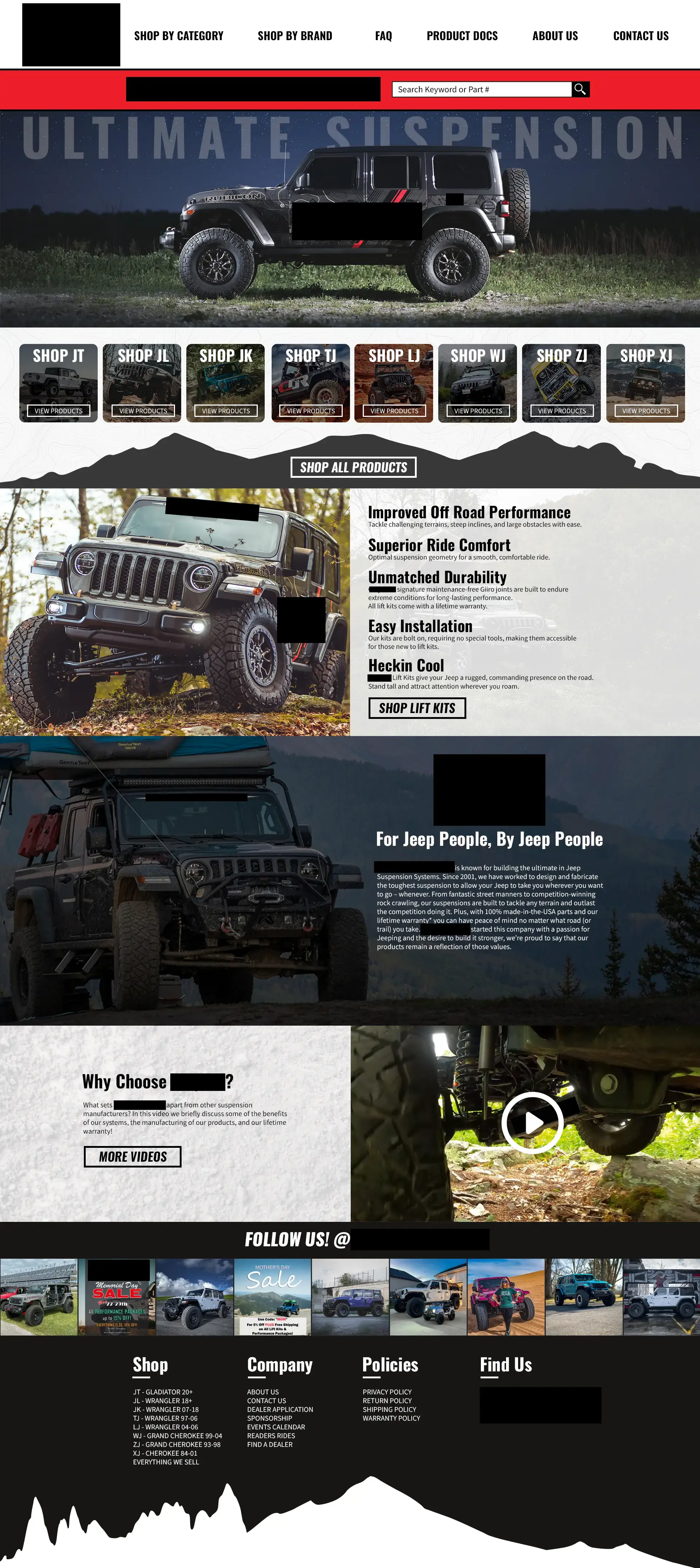In today's digital age, a website's design can make or break its success. At Impakt Results, we've seen firsthand how effective UX (User Experience) design can transform visitor engagement and conversion rates. While we specialize in the automotive and motocross industries, the principles of good UX design are universal. Recently, Impakt secured a significant client thanks to a compelling website comp that clearly conveyed their unique selling points. Here, we share some of our top UX design tips to help you create high-performance websites that stand out and deliver results.
Before we get started, I want to share the comp I made. For privacy reasons, I have covered the logo and references to the clients’ brand.

1. Understand Your Audience
The foundation of any effective UX design is a deep understanding of your audience. Know who they are, what they need, and how they interact with your website. Conduct user research, gather feedback, and create user personas to guide your design process. By understanding your audience, you can create a website that meets their needs and expectations, resulting in a more engaging and satisfying user experience.
The client’s audience has a wide range of Jeeps, so my UX decisions should help them get where they need to be in as few clicks as possible.
2. Clear and Compelling Unique Selling Points (USPs)
Your website should immediately communicate what makes your brand unique. Highlight your USPs prominently on your homepage and key landing pages. Use clear, concise language and compelling visuals to capture your audience's attention. Make sure your USPs are easily identifiable and differentiate you from your competitors. This not only enhances user engagement but also drives conversion rates.
The comp above was made after I felt like I had a clear understanding of the client’s product. It’s important to take the time to learn why the client is successful, and understand what makes their product desirable.
3. Intuitive Navigation
A high-performance website should have intuitive navigation that allows users to find what they’re looking for quickly and easily. Use clear labels, a logical structure, and a consistent navigation bar. Include a search function for added convenience. The easier it is for users to navigate your site, the more likely they are to stay and explore, leading to higher engagement and conversions. Navigation and search is especially important with automotive brands because the users are typically looking for something specific.
4. Mobile Optimization
With the majority of web traffic now coming from mobile devices, it's crucial to ensure your website is mobile-friendly. Use responsive design to ensure your site looks and functions well on all screen sizes. Optimize images and other media for faster loading times on mobile devices. A seamless mobile experience can significantly enhance user satisfaction and reduce bounce rates.
Unless the user needs to select more than one option on the product page, the add to cart button should stick to the bottom of the phone screen on the product page.
5. Fast Load Times
Website speed is a critical component of UX. Slow load times can frustrate users and lead to high bounce rates. Optimize your website’s performance by compressing images, leveraging browser caching, and minimizing code. Use tools like Google PageSpeed Insights and Pingdom Waterfall to identify and fix performance issues. A fast-loading website not only improves user experience but also positively impacts your search engine rankings.
It’s important to use efficient image formats like webp throughout your website. I suggest a slightly lossy compression (around 80 quality). It also helps to resize images to only be as large as you are displaying them.
6. Engaging Visual Design
Visual design plays a key role in user experience. Use high-quality images, a consistent color scheme, and clean typography to create an appealing aesthetic. Ensure your design reflects your brand’s identity and resonates with your target audience. Remember, a visually appealing website can make a strong first impression and keep users engaged. Although this point does a lot for Impakt bringing in new clients, it’s less important for conversion rate to have a flashy website.
7. Effective Call-to-Actions (CTAs)
Your website’s CTAs should be clear, compelling, and strategically placed to guide users towards desired actions. Use action-oriented language and create a sense of urgency. Ensure your CTAs stand out visually by using contrasting colors and prominent placement. Effective CTAs can significantly increase your conversion rates. To measure the effectiveness of your CTA’s, watch recordings and observe heat maps using software like Microsoft Clarity.
8. UX Split Testing
Continuous improvement is key to high-performance UX design. Regularly collect user feedback to understand their pain points and areas for improvement. Conduct A/B testing to compare different design elements and identify what works best. Use analytics to track user behavior and make data-driven decisions. By continually refining your design, you can make your website much more efficient at converting visitors into sales.
Conclusion
Effective UX design is essential for creating high-performance websites that engage users and drive conversions. By understanding your audience, highlighting your USPs, and focusing on intuitive navigation, mobile optimization, fast load times, engaging visuals, effective CTAs, and user feedback, you can create a website that stands out and delivers exceptional results.
At Impakt Results, we pride ourselves on delivering top-notch UX design that showcases our clients' unique selling points and drives success. Whether you're in the automotive industry or any other field, these UX design tips can help you create a website that not only meets but exceeds user expectations.
